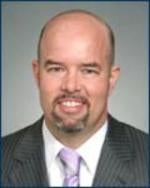In a final written decision, the Patent Trial and Appeal Board (PTAB or Board) agreed with the petitioner that the original challenged claims were unpatentable but at the same time granted the patent owner’s motion to amend, finding that the proposed substitute claims were patentable. This decision may portend a relaxation of the practical requirements for amending claims in IPR proceedings. REG Synthetic Fuels LLC v. Neste Oil Oyj, Case IPR 14-00192 (PTAB, June 25, 2015) (Crumbley, APJ.).
REG’s inter partes review (IPR) petition challenged Neste Oil’s patent directed to a process of manufacturing biodiesel fuel. GEN stepped into the shoes of its predecessor, REG, and maintained the challenge against the Neste patent. The patented two-step process included a first step in which a feed stream of biological origin is hydrodeoxygenated and then a second step in which the feed stream is isomerized. According to the patent, two chemical reaction pathways are present for the deoxygenation step: one requiring a large amount of hydrogen while producing a significant amount of heat that must be dissipated. The purported invention included adding sulfur to the feed stream to selectively favor the less problematic reaction pathway.
Neste admitted that although the elements of the claims were known in the art, prior art taught away from the originally claimed subject matter and also proposed substitute claims. Neste’s original claim 1 included a limitation that sulfur was added to the feed stream within a range of concentrations from 100 weight parts per million (w-ppm) to 10,000 w-ppm. The proposed substitute claim narrowed the range of sulfur content to between 5,000 to 8,000 w-ppm.
The Board was unconvinced by Neste’s teaching-away arguments, finding that the original claims were unpatentable. According to the Board, various prior art references taught advantages of adding sulfur in the range of 2,000 to 4,431 w-ppm to a feedstock. The Board further noted that Neste’s teaching-away arguments were essentially economic ones, which are insufficient to rebut a case of prima facie obviousness under U.S. Court of Appeals for the Federal Circuit precedent.
The Board, however, gave a kinder reception to Neste’s proposed substitute claims and supporting arguments. Noting that the parties did not dispute that the proposed substitute claims met the requirements of Rule 42.121, the Board found that the amendment was responsive to a ground of unpatentability, did not enlarge the scope of the claims or introduce new matter, the proposed a reasonable number of substitute claims and set forth the support for the proposed claims in the original disclosure.
For the proposed substitute independent claim, Neste argued that the prior art references cited by REG either failed to disclose the sulfur concentration of between 5,000 to 8,000 w-ppm or taught that the desirable characteristic of the added sulfur peaked below or plateaued over that range. REG on the other hand had argued that the claimed range would have been obvious as a result of routine optimization of the ranges taught by the prior art since it was “a prime range for investigation.” As one reference taught a fixed sulfur concentration of 2000 w-ppm, the Board concluded that using the claimed concentration would not have been routine.
REG had additionally argued that the motion should fail for not discussing three prior art references known to Neste. According to the Board, however, while Neste was required to explain why that the claims were patentable over the prior art of record, it was “not required to prove that the claims are patentable over every item of prior art known to a person of ordinary skill.” The Board also reasoned that Neste’s duty of candor required it to discuss any relevant prior art not of record but known to it. The Board explained that the three noted references were only relevant to Neste’s teaching-away argument, but not to any new issue raised by the motion to amend.
Practice Note: This decision may reflect a response to recent criticism by patent owners regarding the severe requirements to amend claims during IPRs. In citing to the Idle Free Systems v. Bergstrom decision (denying a motion to amend) (IP Update, Vol. 17, No. 1), the Board made it clear that a patent owner is not required to prove the patentability of substitute claims over every item of prior art known in the art, but rather the prior art of record. The Board’s position here is more permissive than in Idle Free, where the patent owner’s motion to amend was rejected for not meeting the “burden of proof in demonstrating patentability of the proposed substitute claims over the prior art in general.”



 />i
/>i

